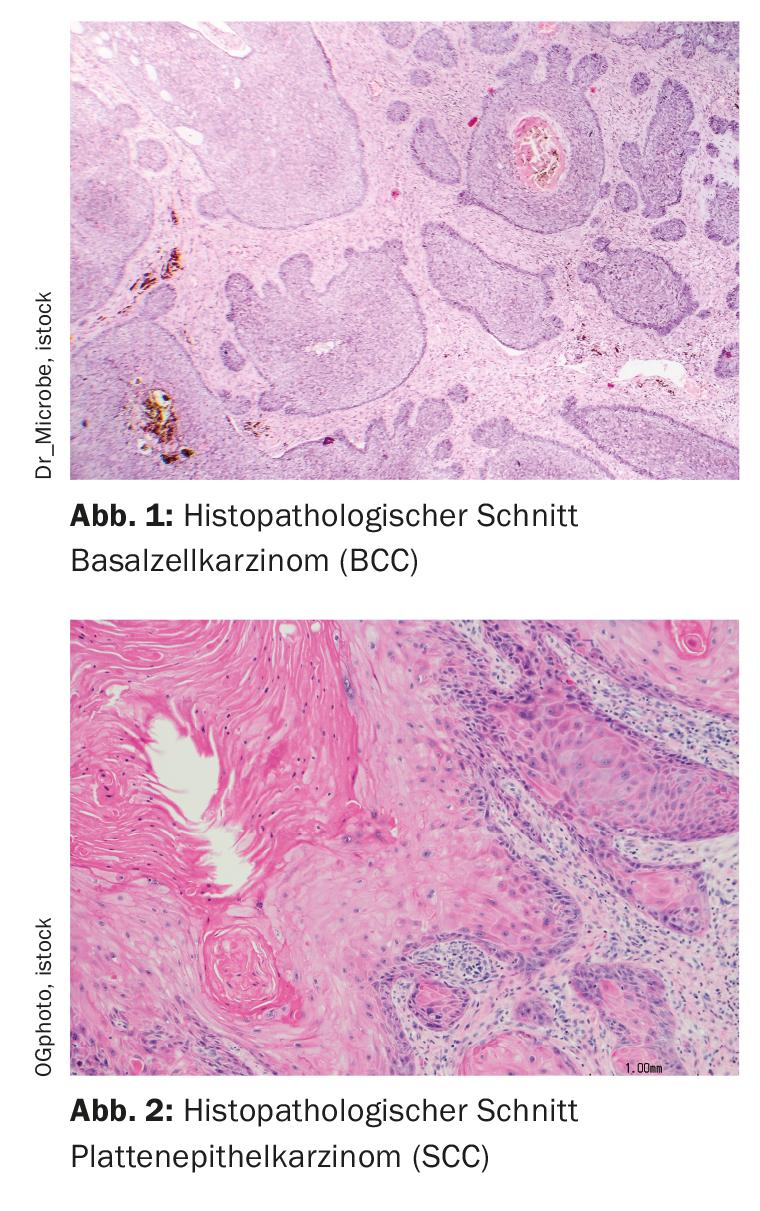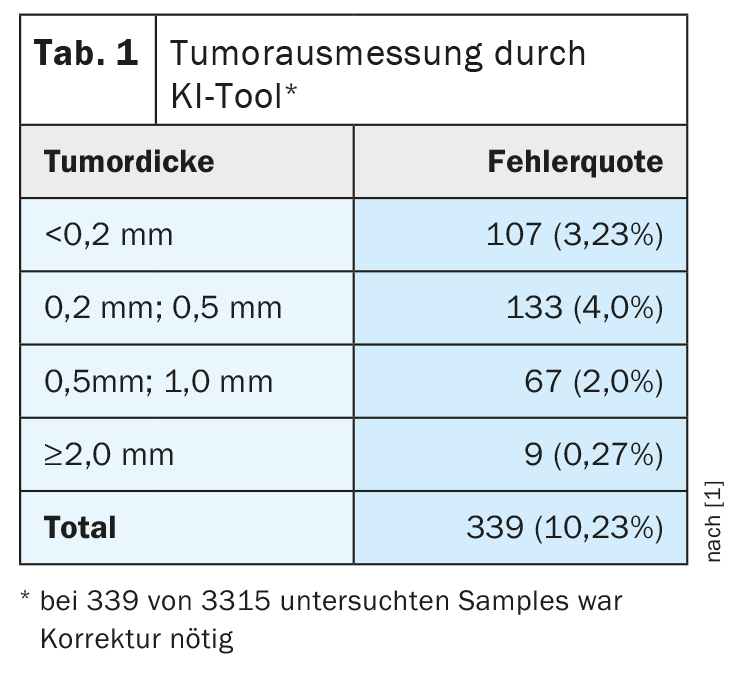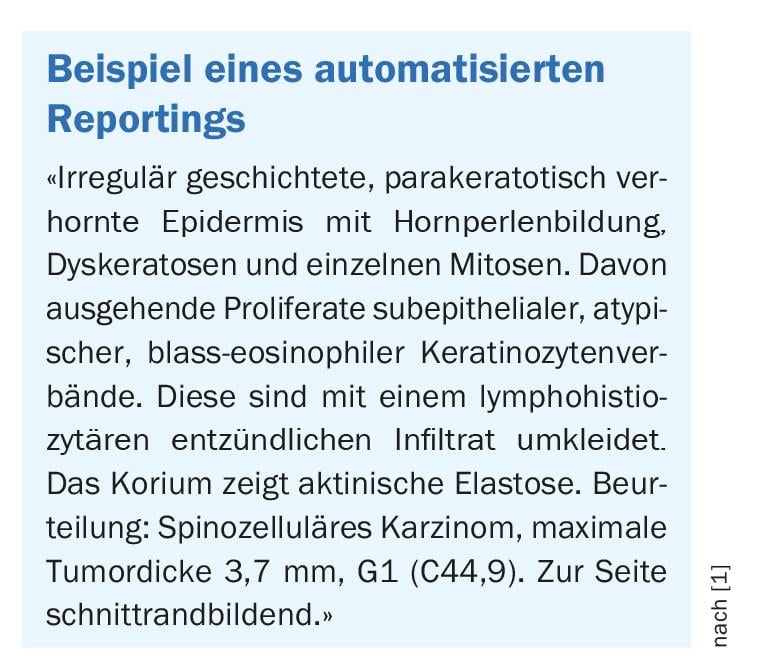AI-based algorithms have the potential to support dermatopathology diagnosis making in the future. Currently, many research efforts are underway in this regard. Among other things, a deep learning algorithm was developed, which can be used for the detection of basal cell carcinoma and squamous cell carcinoma. The goal is rapid and accurate AI-assisted assessment.
Dr. Daniel Otero Baguer, Center for Technomathematics University of Bremen, demonstrated how artificial intelligence (AI) can be used to process histological cross-sectional images for skin cancer detection [1]. AI is expected to one day help dermatopathologists examine histological tissue sections in less time without compromising the quality of the assessment results, the speaker explained. For this purpose, a deep learning algorithm capable of detecting basal cell carcinoma (BCC) and squamous cell carcinoma (SCC) and measuring the tumors was developed [2]. In addition, automated reporting is generated, which can be checked by the physician and adjusted if necessary. Currently, a tool is being developed in close collaboration with dermatopathologists to close the “gap” between research results and usability in daily routine practice, Dr. Otero Baguer said.

AI tool proves remarkable sensitivity and specificity
The test installation at the dermatopathology department in Duisburg-Essen has been underway since April 2021, the researcher said [1]. A total of 3527 BCC samples have been analyzed using the Deep Learning algorithm. Although there have been false-negative and false-positive results, with a specificity of about 98% and a sensitivity of about 99%, it is a very promising method. “We are, of course, trying to continuously improve the Deep Learning algorithm,” said Dr. Otero Baguer [1]. The goal is not to replace dermatopathologists, but to support their work, he said. The AI-based decisions are to be evaluated by the physician, and the whole procedure is more time-saving than without the use of artificial intelligence, he said. The AI tool automatically measures the thickness of the detected tumors. Again, the AI application had been wrong in some cases, but the overall balance was respectable: the Deep Learning algorithm was applied to 3315 specimens and in 339 (10.23%) of them the pathologist had to correct the tumor measurement (Table 1) [1]. These defects are very quickly apparent to the dermatopathologist.

Implementation planned for other tumor entities
The innovative methodology has also been implemented for the detection of squamous cell carcinoma (SCC). It has been shown that the same neural network can reliably distinguish between BCC and SCC, the speaker explained. An example of reporting generated by the Deep Learning algorithm is shown in the box. The idea, he said, is that the AI-assisted initial diagnosis is controlled by a physician in each case. The automatically generated text can be easily adapted. The deep learning algorithm developed by the researchers will be used not only for BCC and SCC, but also for other tumor entities such as Bowen’s disease, the speaker said. A project has also been launched for automated detection of melanoma metastases in lymph nodes, funded by the Hiege Foundation [3].

Congress: Skin Cancer Congress / Working Group Dermatologic Oncology
Literature:
- “Use of artificial intelligence in BCC and SCC histology,” Daniel Otero Baguer, MD, German Skin Cancer Congress, Sept. 15, 2022.
- Le’Clerc Arrastia J, et al: Deeply Supervised UNet for Semantic Segmentation to Assist Dermato-pathological Assessment of Basal Cell Carcinoma. J Imaging 2021; 7(4): 71.
- “Establishment of a Pattern Recognition Algorithm for Histologic Detection of Shield Guard Lymph Nodes in Melanoma Patients,” https://hautkrebsstiftung.de/forschungsprojekte-zur-melanomforschung,(last accessed Dec 08, 2022).











